Ella Enchanted author Gail Carson Levine said of Cinderella’s Stepsisters, “If I had been around when “Cinderella” was first concocted, I would have argued against two stepsisters. We don’t need two! In the fairy tale they’re indistinguishable.”
Indeed they are. Groupings of three are common in fairy tales. Cinderella’s stepsisters function to provide two failed attempts at fitting the shoe before Cinderella is successful, just as the Wolf blows down two house before meeting the brick house pig and the three bears look in two beds before finding Goldilocks in Baby Bear’s. There’s a structural reason for Cinderella to have two stepsisters, but as characters, they’re just as interchangable as the stick and straw pigs.
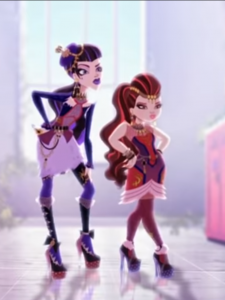
Charles Perrault’s definitive literary version of the tale gives them no more characterization than to say one was less mean than the other. Perrault actually gave one of them a name–Charlotte in English, Javotte in the original French–but this hasn’t caught on much. A 2015 webisode of Ever After High introduces stepsisters Charlotte and Prudence (though they were not given names until a tie-in novel featured them in 2017) but most authors and screenwriters ignore Perrault either give them new names or, more commonly, leave them nameless. Throughout the twentieth century, TV portrayals of the stepsisters varied from show to show and decade to decade, but not from sister to sister.
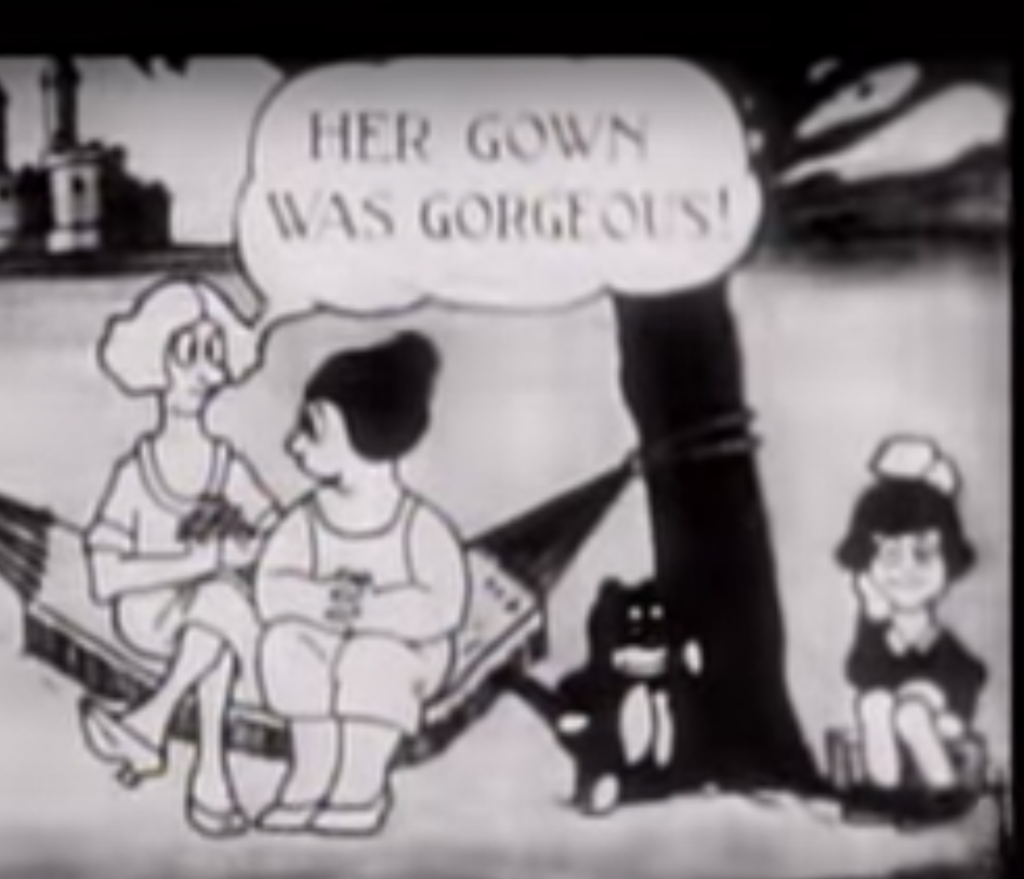
The first televised adaptation was Disney Animated Shorts’s 1922 silent black-and-white Cinderella. Though made as a cinematic featurette, this short was later broadcast on TV, earning it a place in our database. The stepsisters in this cartoon have different hair colors, heights, and builds, and get to appear on screen separately for a few seconds. The squat brunette sister briefly dances with Prince Charming and glares when Cinderella cuts in. The burly blonde sister speaks on her own, but only to praise Cinderella. “She was wonderful! Her gown was gorgeous!”

In the 1930s, the stepsisters fared worse. With the 1938 “Cinderella Meets Fella,” the stepsisters and stepmother are all identical save for hair color, and they speak in chorus. In the Betty Boop cartoon “Poor Cinderella,” the stepsisters are completely identical, and do nothing more than yell at Cinderella, leave for the ball, and bicker at the end.The only other thirties adaptation, The Cookie Carnival, is completely free of stepsisters, as is the 1944 Swing Shift Cinderella.
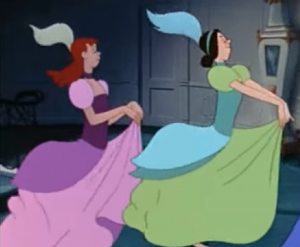
In 1950, Disney’s first portrayal of the Tremaine sisters made them nothing more than color-coded clones of each other, equally crabby and abusive. Rocky and Bullwinkle’s first Cinderella fractured fairy tale, aired in 1960, took a few seconds to describes the sisters as “popular and sought after scrubwomen.” Thir hairstyles are different, but they get no dialogue and their scrubwomen dresses are identical. The scrubwomen role makes them distinguishable from their snooty fairytale personas, but not from each other. Their sequel, Cinderella Returns, broadcast the same year, features only Cinderella, the Prince, and the Fairy Godmother, showing that the stepsisters aren’t necessary to the story. We don’t need two. We don’t even need one.
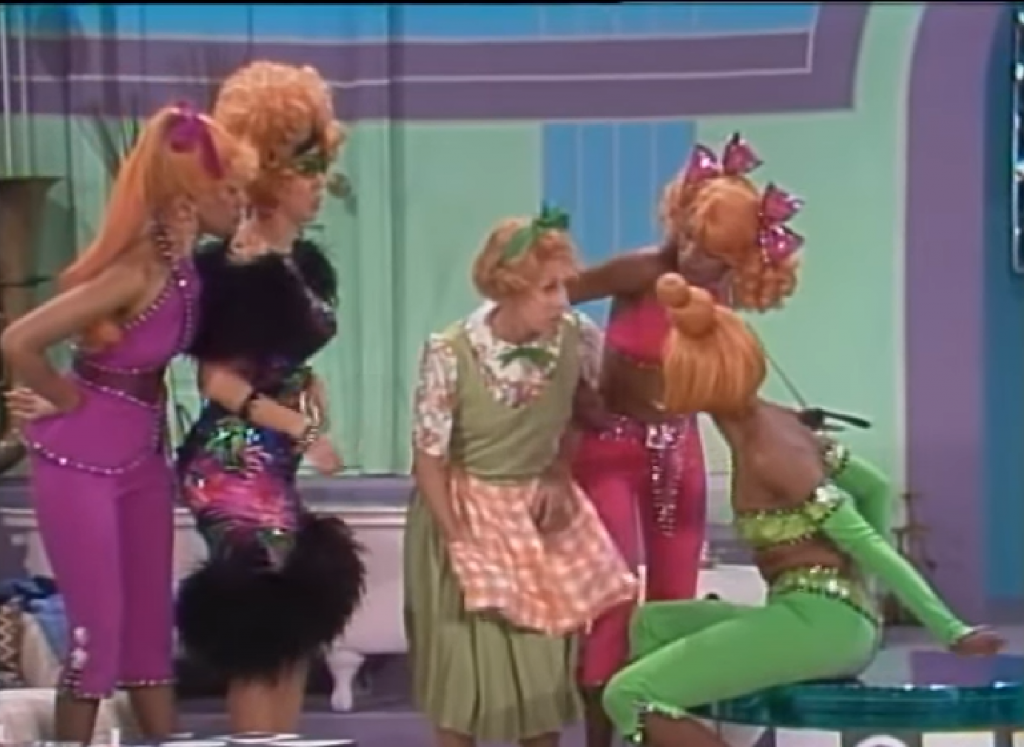
Yet in 1975, The Carol Burnett Show made the rare move of giving Cinderella three seventies-tastic stepsisters, played by The Pointer Sisters. This choice was not made to expand the tale, but because there were three Pointer Sisters to work with. They’re still color-coded clones, even if those colors are neon and there’s three of them this time. As with previous adaptations, all they do is yell at Cinderella (for being a square), talk about what a foxy superchick Cinderella is at the ball, and fail to fit the shoe.
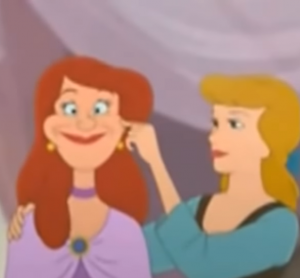
Disney returned to the Tremaine sisters with the 2002 Cinderella II: Dreams Come True, giving stepsister Anastasia a featurette where she falls in love with a baker. Anastasia, a protagonist now, is portrayed as so socially inept that Cinderella needs to physically manipulate her face to teach her how to smile. Though she does get a happy ending with her unnamed baker, he vanishes in Cinderella III: A Twist in Time, where Anastasia gripes, “Why don’t I get a happy ending? Where’s the prince who’ll marry me?” Despite getting along with Cinderella in Dreams Come True, she now reverts to her old villain status. She steals the Fairy Godmother’s wand, turns back time, takes Cinderella’s place, and nearly steals her happily ever after. Drizella, once again, is sidelined in this adaptation. It seems only one stepsister at a time can receive strong characterization.
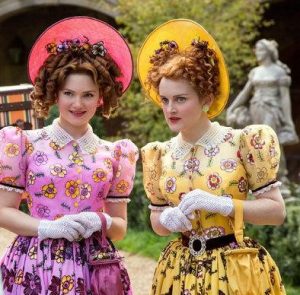
Both Anastasia and her sister further regressed in the 2015 live remake. Anastasia’s greater characterization is gone and they are once again reduced to their color coded clone status, though Drizella’s dress has now morphed from green to yellow.
The 2010 Korean drama Cinderella’s Stepsister (literally translated from Korean as Cinderella’s Sister) makes stepsister Eun-jo a protagonist in her own right. She gets a sympathetic portrayal. Sure, Hyo-son’s mother died, but Eun-jo has grown up with a chronic golddigger mother and her string of scumbag boyfriends. Eun-jo gets a story of her own, but, there’s only one of her. Can two stepsisters coexist while each having their own depth and characterization?
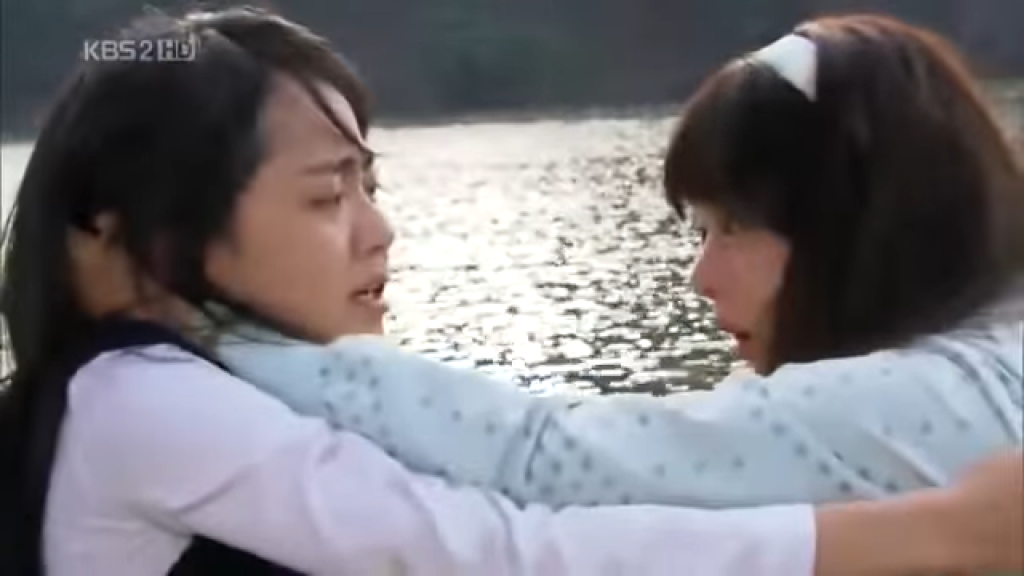
In the final season of Once Upon A Time, they finally can, and Disney’s Drizella takes center stage. For the first few episodes, Drizella appeared to be Lady Tremaine’s only daughter, until her older sister is revealed to be dead. When Anastasia was fourteen, she and Cinderella fell through the ice on a frozen pond. Lady Tremaine’s husband dove underwater but could only rescue Cinderella. This gives Lady Tremaine a more solid reason for hating the poor girl than simple beauty or stepdaughter status. And Cinderella isn’t the only loathed child. After Anastasia’s death, Lady Tremaine mistreats Drizella and idealizes Anastasia, transporting Drizella and various other amnesiac fairy tale characters to the real world as part of a plan to bring Anastasia back to life.
At least, that’s what Lady Tremaine thinks is going on. The real mastermind is Drizella. After growing up deprived of love, Drizella turns against her mother and learns sorcery to cast a dark curse, bring Anastasia back to life, and make life horrible for both her mother and her sister. But that doesn’t go as planned. Once Anastasia’s brought back to life, she shows powers beyond her sister’s. Mother Gothel, who groomed Drizella into villainy, presses Anastasia into joining her coven of witches. Rumpelstiltskin pursues Anastasia because he suspects she’s a Chosen One who can free him from the curse of immortality. After ninety-six years of sparse characterization, Cinderella’s stepsisters are stepping out of the shadows and taking center stage. One a villain, one a chosen one.
Anastasia and Drizella aren’t just strongly characterized side characters. They steal screentime from their stepsister until it feels, midseason, as if the show is more about them than Cinderella. Drizella even kisses her stepsister’s husband, Henry, who is amnesiac and doesn’t realize he’s married.
Though Drizella doesn’t succeed in stealing Cinderella’s husband, she does get a happy ending with someone she loves: her sister, Anastasia. Mother Gothel turns the sisters against each other in a plot to corrupt Anastasia’s magic. They both nearly kill each other-Drizella to steal Anastasia’s magic, Anastasia in revenge and self-defense. But instead, the sisters put aside their enmity and get back together. Drizella tells Gothel, “I guessed you underestimated the power of sisterhood.”

In most Cinderella adaptations, the stepsisters exist solely to torment Cinderella. In that role, they cannot be heroic in their own right. But instead of teaming up to fight Cinderella further, Drizella reconciles with Anastasia and they walk off hand-in-hand to a new life in another realm. Their happily ever after is one of sisterhood, sending a message to audiences that sisters and all women need not look on one another in jealousy or disdain.
Once Upon A Time’s portrayal of the stepsisters shows that fairy tale TV adaptations aren’t just about recycling old tales for a modern era. They’re about expanding the original tale and taking it in new directions. Modern audiences want to see the tales they know and love from the perspectives of new characters. While Cinderella is still technically the main focus of OUAT’s seventh season, Anastasia and Drizella finally get their fair share of screentime, fighting for a world where even a wicked stepsister can score a happy ending.
